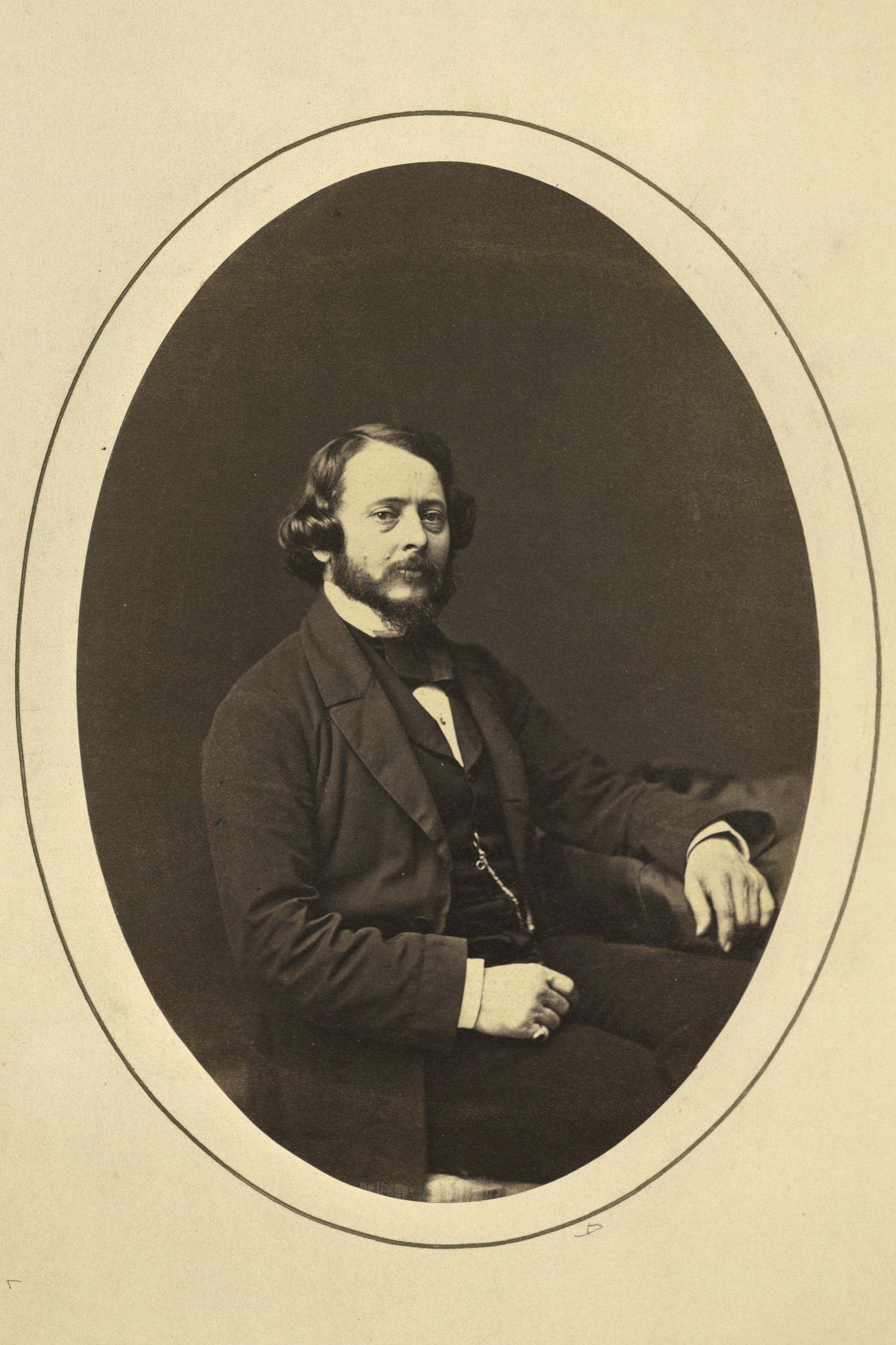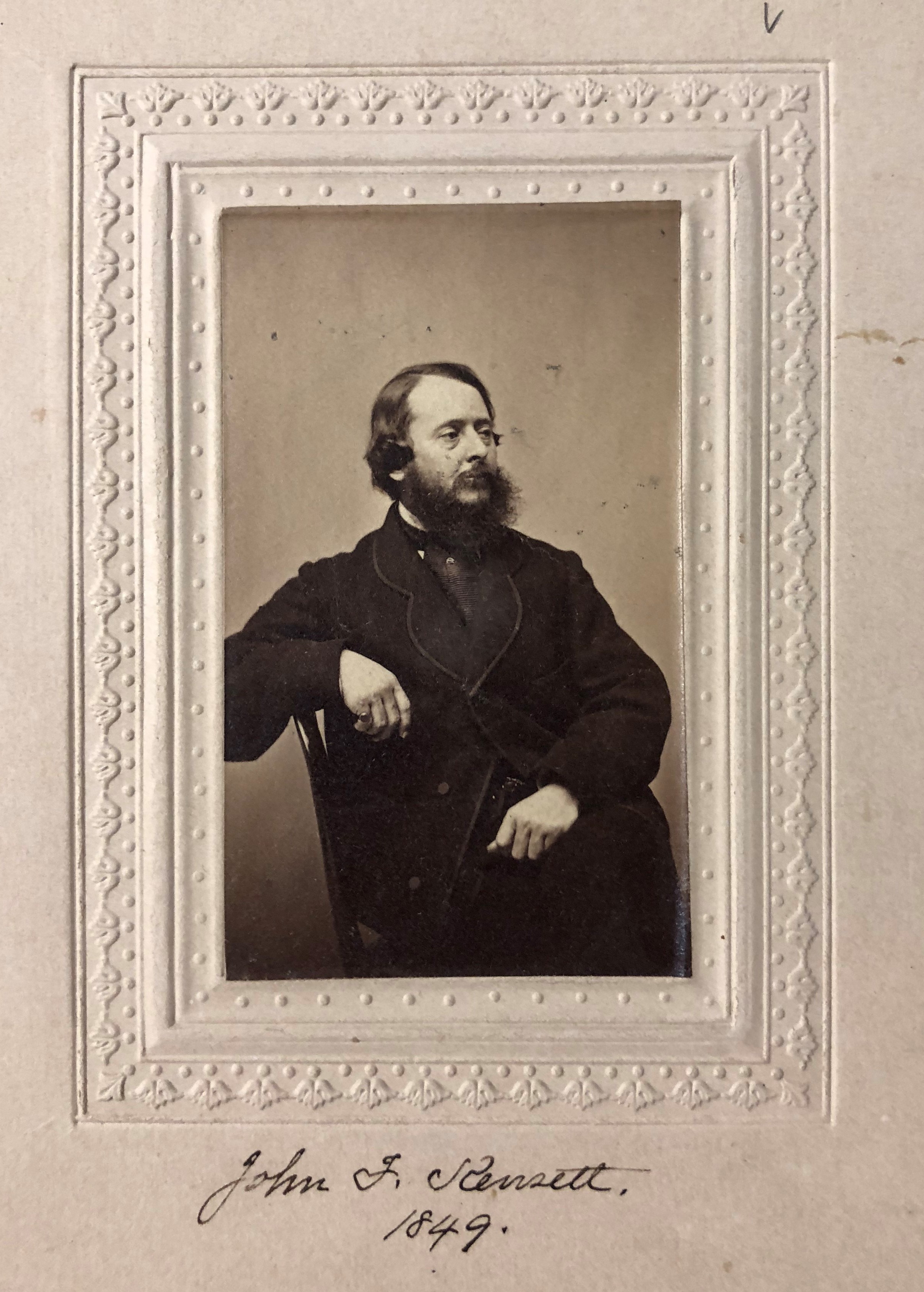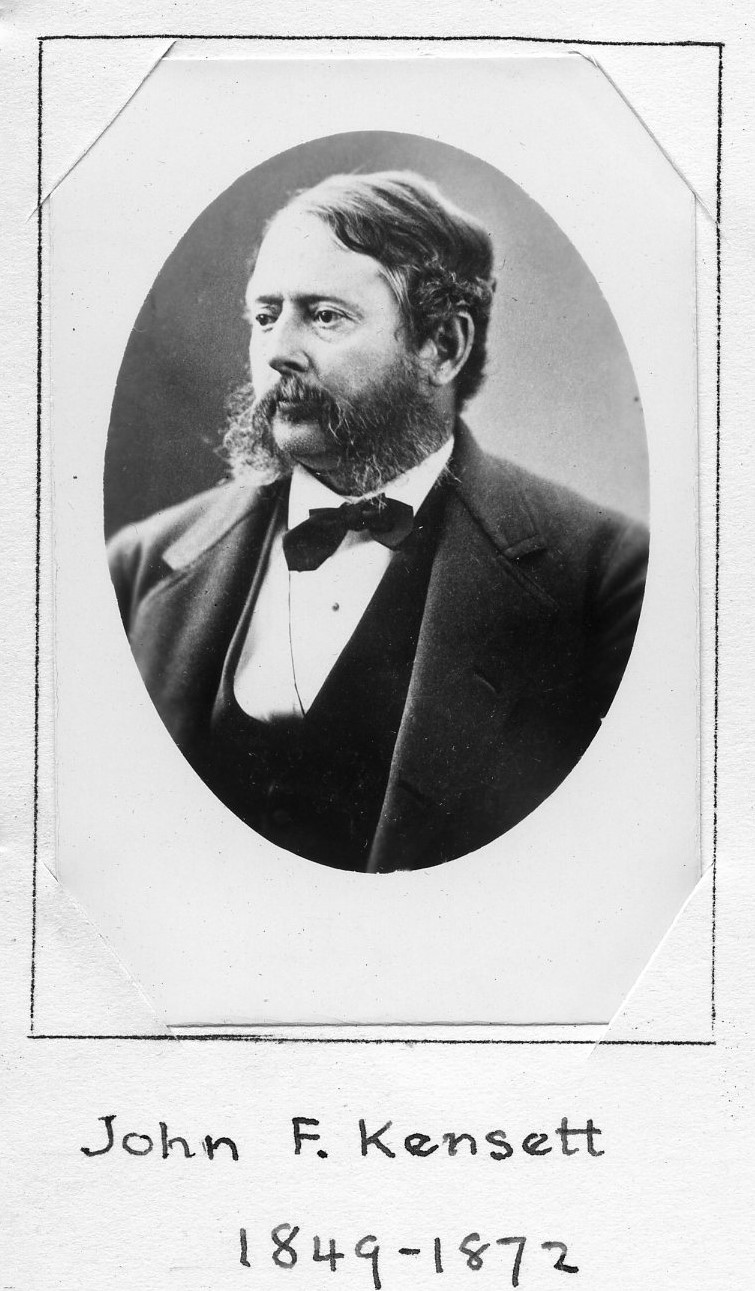Artist
Centurion, 1849–1872
Born 22 March 1816 in Cheshire, Connecticut
Died 14 December 1872 in New York (Manhattan), New York
Buried Green-Wood Cemetery , Brooklyn, New York
, Brooklyn, New York
Proposed by Not recorded
Elected 12 May 1849 at age thirty-three
Proposer of:
Seconder of:
Century Memorials
In no year has the club had so many and such losses to deplore. While the average yearly number of deaths for the past six years, since the Century numbered 500, has been only five, we count this year the vacant places of more than twice as many; and the greater number of those places how large, and how conspicuous! In the list that contains the names of Allan Melville, Isaac Bronson, Josiah Lane, Kintzing Post, Charles Hunt, John White, Francis Vinton, Francis Lieber, John Kensett, George Putnam, and John Priestley, a list still rising in dignity as it nears its end, and startling us with the suddenness of the successive shocks it records, we see in one view how much of its strength and its grace have departed forever from the Century. Among its wise counsellors some of the wisest, among its ornaments some of the brightest, among those it honored some who lent it most honor, among its faithful servants some of the most faithful, have gone. “The old order changeth, giving place to new.” Others may come, as dear and honored with our successors as these with us. But, to soften the personal grief that we who have been their associates for a score of years suffer, who can renew for us the temperate prudence of Lane and Melville, the gallant gentlemanhood of Post, or the charm of Hunt’s rectitude and modest intelligence, or our just pride in Vinton and Lieber, or love and admiration like that we had for Kensett, or such gratitude for their faithful work as Putnam and Priestley won. It does not take from the tender remembrance in which we hold them all, to own that the latest of these our losses was the greatest.
Augustus R. Macdonough
1873 Century Association Reports
John Frederick Kensett—like Durand, one of the Hudson River School—was forty years of age when the Association was incorporated. Born in Connecticut, he learned the art of engraving from his father, who had come from England in 1812. John Kensett turned to landscape painting in 1845 and four years later became a National Academician. In 1859 he served on the commission to direct the ornamentation of the Capitol in Washington. Hardly a public or private gallery in the country was without at least one example of his work at the time of his death. Thirty-eight of his canvases were presented to the Metropolitan Museum of Art. The Century held a meeting in his memory, at which Huntington said that Kensett “delighted in silvery gray, and would send the mists drifting along the hill sides, make the mountain brook sparkle among the moss-grown rocks, or the sea waves roll on sandy beaches, or on rich-toned cliffs, dripping with foam and illumined by golden light, with a magical skill peculiarly his own. . . . He rejoiced in the success of others and cheered on the young artists by kind words and a helping hand.”
His “Study of Hemlock” and two paintings, each entitled “The Falls,” are in the card room; his “Coast Scene” in the private dining-room; and in the East room is his enormous “Chocorua.”
A portrait of Kensett, by one of the founders of the Century, Thomas P. Rossiter, hangs in the fourth floor hall.
Literature Committee
“Incorporators of the Century, 1857” (1936 pamphlet)



